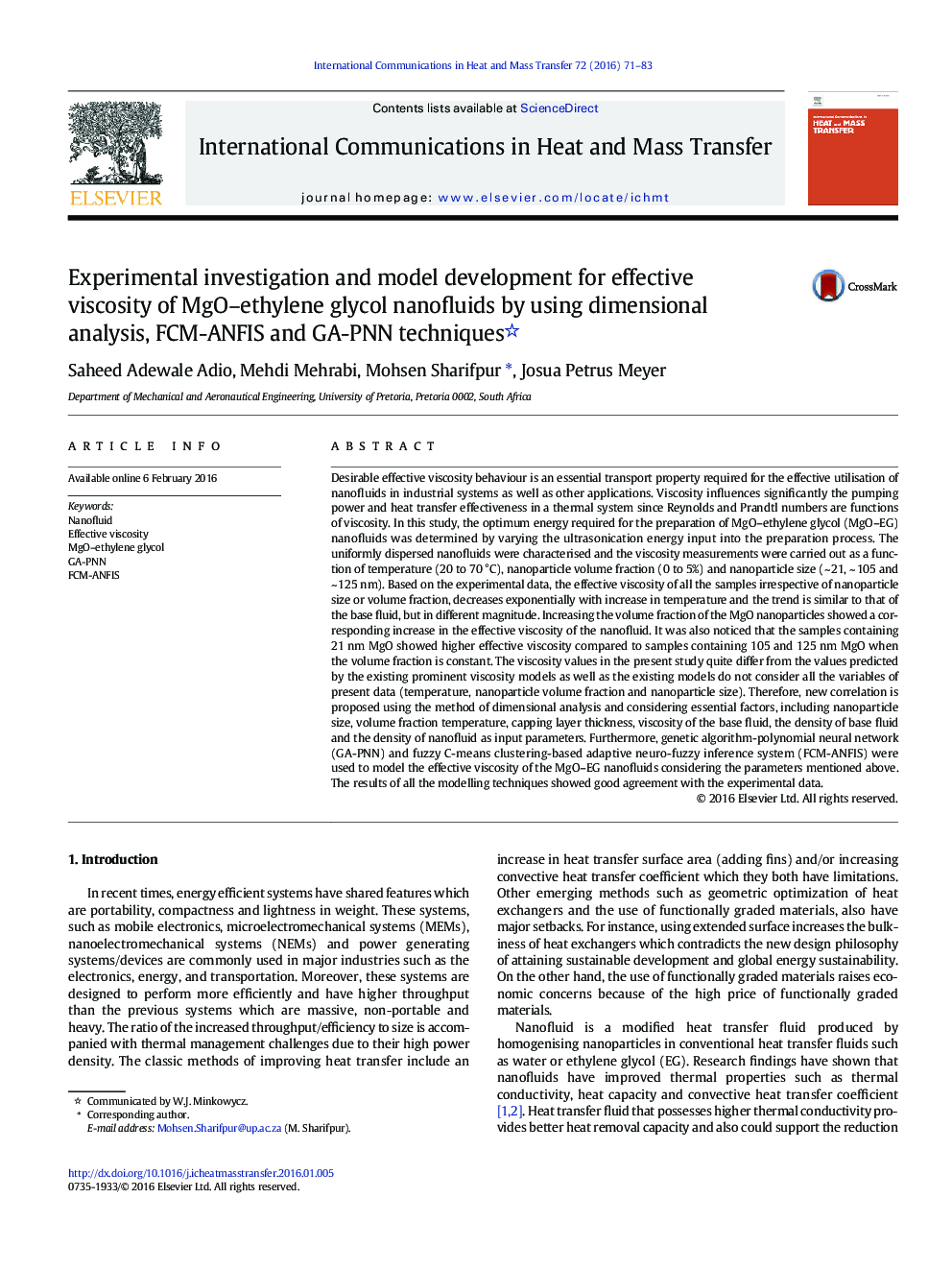| کد مقاله | کد نشریه | سال انتشار | مقاله انگلیسی | نسخه تمام متن |
|---|---|---|---|---|
| 652905 | 1457482 | 2016 | 13 صفحه PDF | دانلود رایگان |

Desirable effective viscosity behaviour is an essential transport property required for the effective utilisation of nanofluids in industrial systems as well as other applications. Viscosity influences significantly the pumping power and heat transfer effectiveness in a thermal system since Reynolds and Prandtl numbers are functions of viscosity. In this study, the optimum energy required for the preparation of MgO–ethylene glycol (MgO–EG) nanofluids was determined by varying the ultrasonication energy input into the preparation process. The uniformly dispersed nanofluids were characterised and the viscosity measurements were carried out as a function of temperature (20 to 70 °C), nanoparticle volume fraction (0 to 5%) and nanoparticle size (~ 21, ~ 105 and ~ 125 nm). Based on the experimental data, the effective viscosity of all the samples irrespective of nanoparticle size or volume fraction, decreases exponentially with increase in temperature and the trend is similar to that of the base fluid, but in different magnitude. Increasing the volume fraction of the MgO nanoparticles showed a corresponding increase in the effective viscosity of the nanofluid. It was also noticed that the samples containing 21 nm MgO showed higher effective viscosity compared to samples containing 105 and 125 nm MgO when the volume fraction is constant. The viscosity values in the present study quite differ from the values predicted by the existing prominent viscosity models as well as the existing models do not consider all the variables of present data (temperature, nanoparticle volume fraction and nanoparticle size). Therefore, new correlation is proposed using the method of dimensional analysis and considering essential factors, including nanoparticle size, volume fraction temperature, capping layer thickness, viscosity of the base fluid, the density of base fluid and the density of nanofluid as input parameters. Furthermore, genetic algorithm-polynomial neural network (GA-PNN) and fuzzy C-means clustering-based adaptive neuro-fuzzy inference system (FCM-ANFIS) were used to model the effective viscosity of the MgO–EG nanofluids considering the parameters mentioned above. The results of all the modelling techniques showed good agreement with the experimental data.
Journal: International Communications in Heat and Mass Transfer - Volume 72, March 2016, Pages 71–83